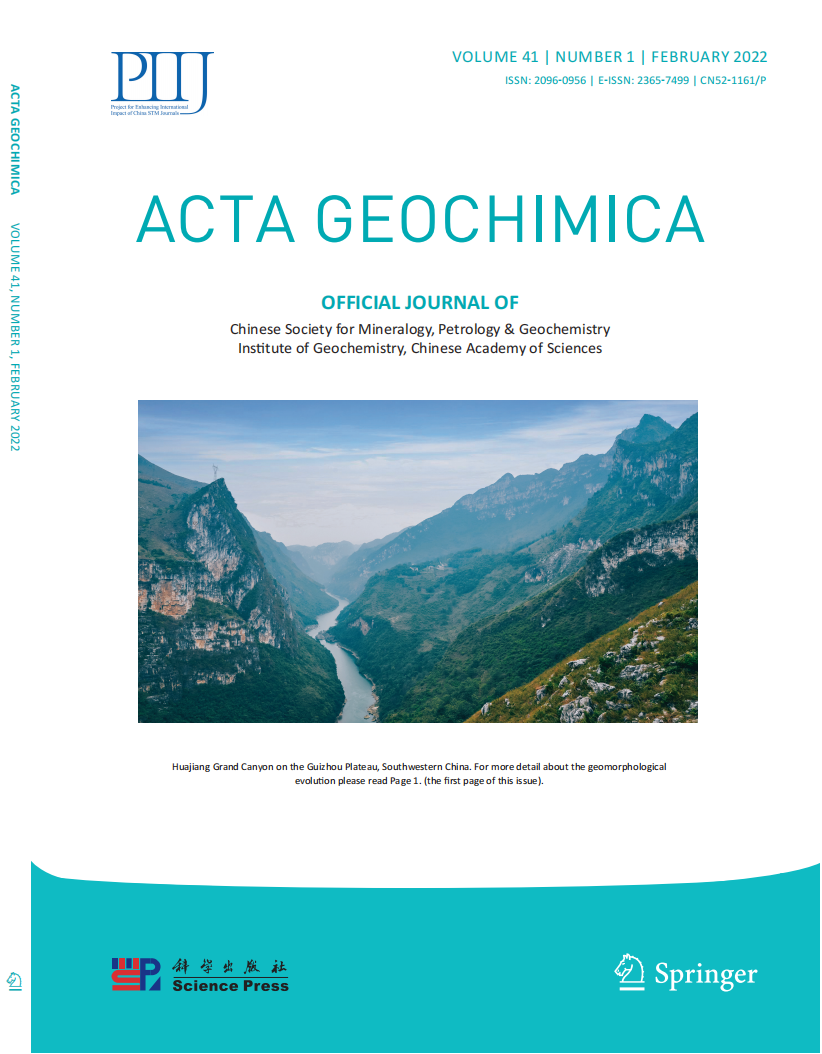- 钛学术文献服务平台 \
- 学术期刊 \
- 基础科学期刊 \
- 化学期刊 \
- 地球化学学报(英文)期刊 \
Fluid properties and sources of Sixiangchang carbonateassociated mercury deposit, southwest China
Fluid properties and sources of Sixiangchang carbonateassociated mercury deposit, southwest China
原文服务方:
地球化学学报(英文)
摘要:
Mercury mines in Guizhou province are the main base of mercury production and the most important resource base in China. The San-Dan mercury belt in Guizhou province contains a series of important mercury deposits. However, the source of metallogenic materials and the properties of metallogenic fluid of these mercury deposits have long been a controversial issue. In this study, we used cathode luminescence techniques to distinguish different stages of dolomite and calcite, laser ablation inductively coupled plasma mass spectrometry to analyze the trace elements, and stable isotope mass spectrometry techniques to analyze C–O isotopes compositions of dolomite and calcite in the Sixiangchang mercury deposit in San-Dan mercury belt. We also measured the sulfur isotope composition of cinnabar. Our study showed that dolomite can be divided into two stages, the lumpy dolomite associated with cinnabar in Dol 1 stage and dolomite vein in Dol 2 stage, which is associated with Cal 2 stage calcite vein. With the progress of mineralization, Al, As, Mo, Sb, and Sr elements were gradually enriched in the ore-forming fluid. The rare earth element (REE) partition curve of Dol 1 stage dolomite showed a trend of light REE enrichment. Cal 2 stage calcite and Dol 2 stage dolomite exhibited a flat-type REE partition curve, and Dol 2 stage dolomite showed a strong negative anomaly for Eu. δ13C of carbonate mineral variation ranges from - 6.89 to - 2.16 ‰, while δ18O variation ranges from 13.80 to 23.09 ‰, and the δ34S variation range of cinnabar is 16.51–24.28 ‰. Carbonate mineral trace elements and C–O isotopes compositions suggested that early ore-forming fluid was reduced, and late ore-forming fluid was oxidized. The oreforming fluid of the Sixiangchang mercury deposit is a mixture of deep crustal fluid and meteoric water in deep thermal circulation, and involved in the oxidation of organic matter. The cinnabar δ34S results showed that sulfur mainly came from seawater sulfate with the

推荐文章
Ore genesis of Badi copper deposit, northwest Yunnan Province, China: evidence from geology, fluid i
Badi copper deposit
Fluid inclusion
Sulfur isotope
Hydrogen and oxygen isotope
Ore genesis
Chemical characteristics of rainwater in karst rural areas, Guizhou Province, Southwest China
Chemical composition
Rainwater
Karst rural area
Southwest China
Genesis of the Nanyangtian scheelite deposit in southeastern Yunnan Province, China: evidence from m
Fluid inclusion
C–O isotopes
Skarn
Scheelite deposit
Nanyangtian
Geological significance of nickeliferous minerals in the Fule Pb–Zn deposit, Yunnan Province, China
Nickeliferous
Permian Emeishan basalt
Fule Pb–Zn deposit
MVT deposit
Barrier layer
内容分析
关键词云
关键词热度
相关文献总数
(/次)
(/年)
文献信息
| 篇名 | Fluid properties and sources of Sixiangchang carbonateassociated mercury deposit, southwest China | ||
| 来源期刊 | 地球化学学报(英文) | 学科 | |
| 关键词 | Trace elements Carbon and oxygen isotopes Sulfur isotope Calcite and dolomite Youjiang Basin | ||
| 年,卷(期) | 2022,(5) | 所属期刊栏目 | |
| 研究方向 | 页码范围 | 670-682 | |
| 页数 | 12页 | 分类号 | |
| 字数 | 语种 | 英文 | |
| DOI | 10.1007/s11631-019-00362-w | ||
五维指标
版权信息
全文
- 全文.pdf
引文网络
引文网络
二级参考文献 (0)
共引文献 (0)
参考文献 (0)
节点文献
引证文献 (0)
同被引文献 (0)
二级引证文献 (0)
2022(0)
- 参考文献(0)
- 二级参考文献(0)
- 引证文献(0)
- 二级引证文献(0)
研究主题发展历程
节点文献
Trace elements
Carbon and oxygen isotopes
Sulfur isotope
Calcite and dolomite
Youjiang Basin
研究起点
研究来源
研究分支
研究去脉
引文网络交叉学科
相关学者/机构
期刊影响力
地球化学学报(英文)
主办单位:
中国科学院地球化学研究所
出版周期:
双月刊
ISSN:
2096-0956
CN:
52-1161/P
开本:
大16开
出版地:
贵州省贵阳市观水路46号地球化学研究所
邮发代号:
创刊时间:
1982-01-03
语种:
英文
出版文献量(篇)
0
总下载数(次)
0
总被引数(次)
0
期刊文献
相关文献
推荐文献

 免费查重
免费查重










